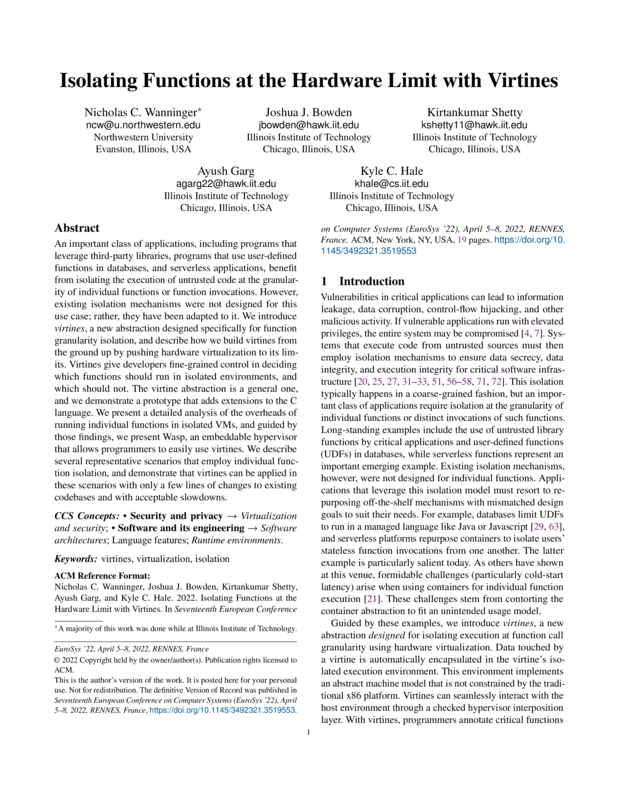Isolating Functions at the Hardware Limit With Virtines
 Download Paper
Download PaperVenue
Authors
Awards
Badges



Categories
Abstract
An important class of applications, including programs that leverage third-party libraries, programs that use user-defined functions in databases, and serverless applications, benefit from isolating the execution of untrusted code at the granularity of individual functions or function invocations. However, existing isolation mechanisms were not designed for this use case; rather, they have been adapted to it. We introduce virtines, a new abstraction designed specifically for function granularity isolation, and describe how we build virtines from the ground up by pushing hardware virtualization to its limits. Virtines give developers fine-grained control in deciding which functions should run in isolated environments, and which should not. The virtine abstraction is a general one, and we demonstrate a prototype that adds extensions to the C language. We present a detailed analysis of the overheads of running individual functions in isolated VMs, and guided by those findings, we present Wasp, an embeddable hypervisor that allows programmers to easily use virtines. We describe several representative scenarios that employ individual function isolation, and demonstrate that virtines can be applied in these scenarios with only a few lines of changes to existing codebases and with acceptable slowdowns.